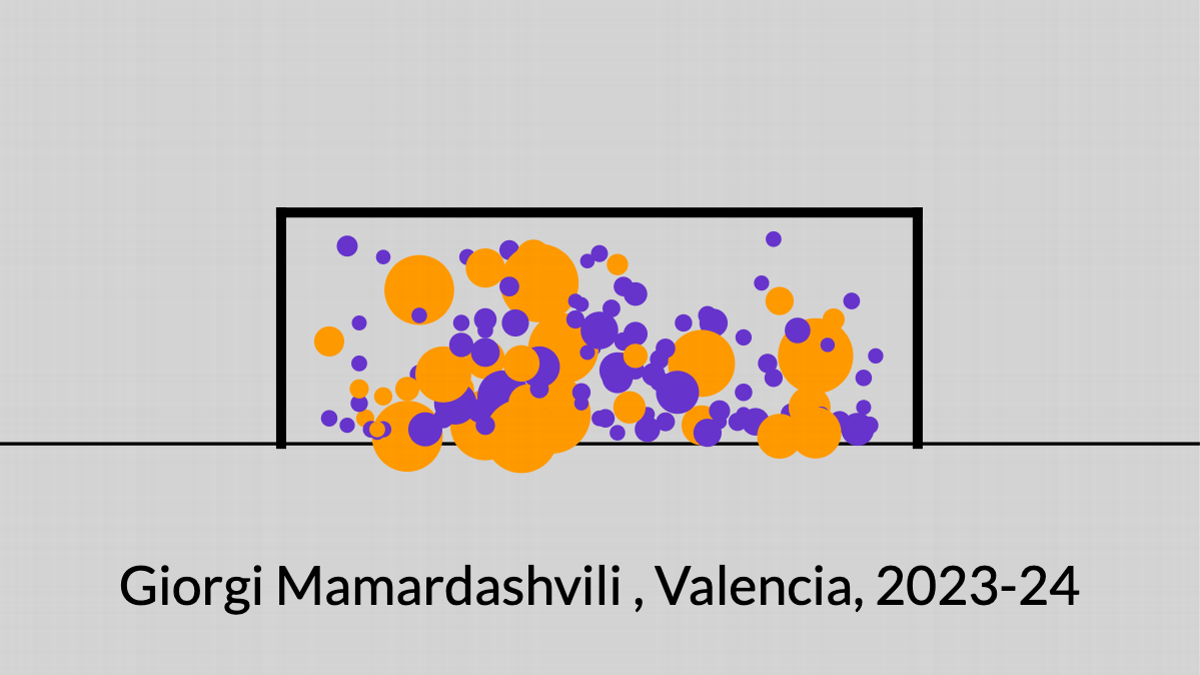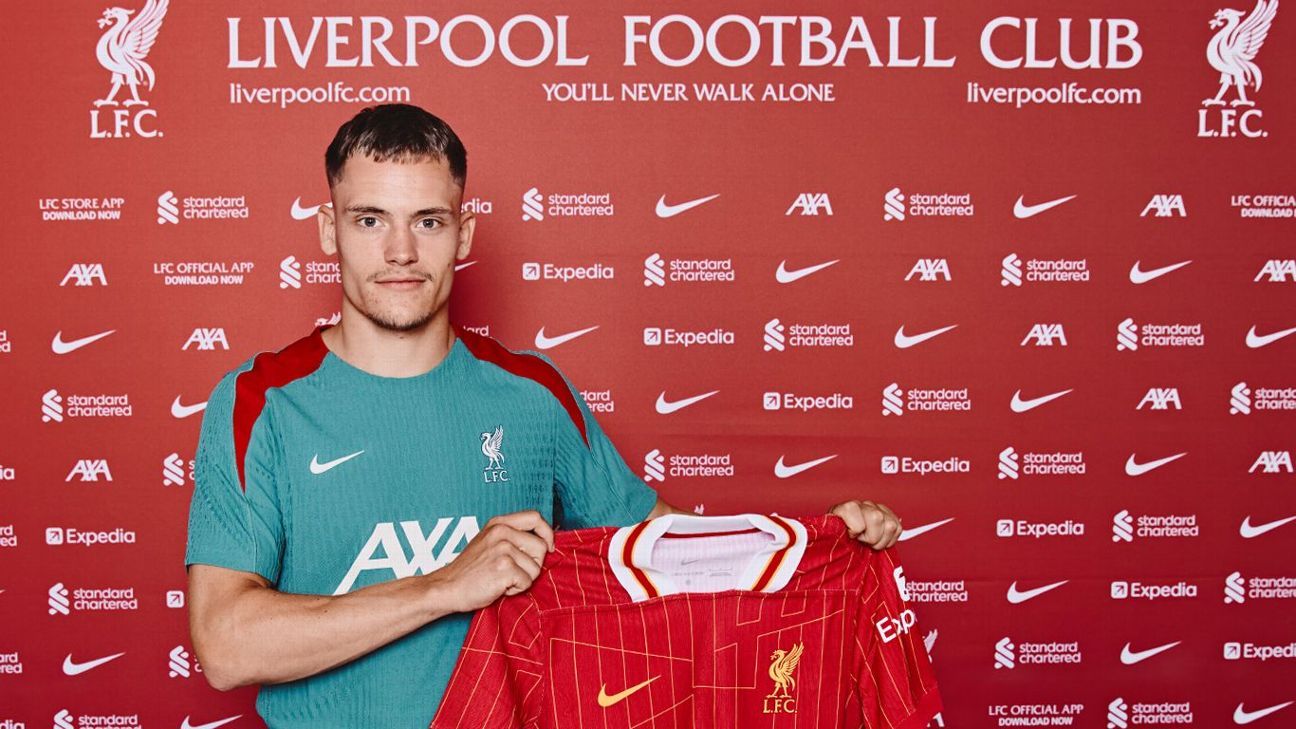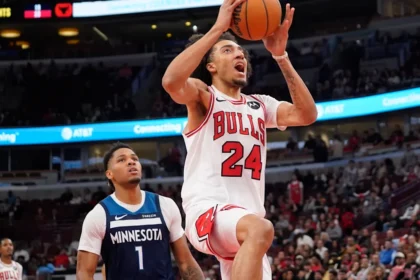Just a year ago, enthusiasm for Liverpool was waning, and fans were anxious. The departure of esteemed manager Jürgen Klopp left a dent in morale as the team, once leading in April, stumbled to a third-place finish laden with injuries, trailing Manchester City and Arsenal. Despite this, the club’s ownership seemed to echo a singular sentiment to any new manager: simply restore the previous glory.
After losing out on Real Sociedad’s midfielder Martin Zubimendi at the last moment, Liverpool finds itself relying on backups, especially with goalkeeper Giorgi Mamardashvili sidelined for the season and an ex-player on a budget.
Outside the Liverpool fanbase, few took the club’s summer transfer plans seriously. This was a team that finished third in the league in 2023-24 but made no significant additions. Indeed, more pundits believed Liverpool was unlikely even to qualify for the Champions League than to win the Premier League.
Yet here we are: Liverpool has not only claimed its 20th Premier League title but has also invested over 300 million euros in player acquisitions. By the conclusion of the summer transfer window, this figure could exceed half a billion euros.
So, how did they manage such spending? More intriguingly, for a team historically known for nurturing underestimated talent, is Liverpool engaging in a volatile and inefficient transfer market?
Liverpool’s Spending Spree
As of now, according to TransferMarkt, Liverpool has signed four major players. Although these figures may not be precise, they provide a reasonable reference point.
Florian Wirtz, a midfielder from Bayer Leverkusen, was acquired for 125 million euros; Hugo Ekitike, a striker from Eintracht Frankfurt, for 95 million euros; Milos Kerkez, a fullback from Bournemouth, for 46.9 million euros; and Jeremy Frimpong, another fullback from Bayer Leverkusen, for 40 million euros.
Conversely, three players have exited for substantial fees: Jarrell Quansah, a center-back to Bayer Leverkusen for 35 million euros; goalkeeper Kelleher to Brentford for 14.8 million euros; and Trent Alexander-Arnold, a fullback to Real Madrid for 10 million euros.
On the horizon, there seems to be a pressing need for a record-setting transfer, potentially for Alexander Isak from Newcastle United. With a threadbare squad prone to injuries, this could be a crucial addition, while another left winger might be on the cards depending on further player exits.
Rumors suggest Luis Diaz could be heading to Bayern Munich for around 75 million euros. Liverpool appears to be hanging onto Darwin Nunez, and if Harvey Elliott moves, he might fetch around 40 million euros. Additionally, some academy graduates like Ben Doak and Stefan Bajcetic could also command double-digit fees upon leaving.
If we assume spending levels stabilize, with every incoming player signed on a five-year deal, transfer fees could be averaged at around 61 million euros per year. Meanwhile, the three academy players might generate about 60 million euros, implying that next fiscal year, current outlays essentially balance out to zero. This allows Liverpool the flexibility to spend more, particularly on players like Diaz and Nunez.
In terms of overall expenditure, no Premier League team has outspent Liverpool in the last three years. Clubs like Chelsea, Manchester United, and others have exceeded Liverpool’s spending by a significant margin. Chelsea alone has shelled out over 1 billion euros more than Liverpool during this period.
Remarkably, while most soccer teams have struggled financially during this era, Liverpool finished the fiscal year profitable and clinched the Premier League title. They also benefited from a rebounded attendance at their newly expanded Anfield and received bonus payments for winning the league along with additional income from returning to the Champions League.
Moreover, their recent sponsorship deal with Adidas promises additional revenue. According to CEO Billy Hogan, this summer marks a culmination of years of planning.
The Reasons Behind Liverpool’s Spending
Rebuilding was essential for Liverpool before the last World Cup. After clinching nearly all major trophies in the 2021-22 season but settling for just the Carabao Cup and FA Cup, they ranked highly among club teams in recent history. However, the average age of the squad was 27.7 years, one of the oldest in the league.
Players typically reach their peak between 24 and 28, so Liverpool, once excellent, now faced a roster nearing its decline. A significant overhaul was necessary, but this can be hard to acknowledge when success clouds the future. That’s why a strong front office is key to balancing short-term performance with long-term viability.
Unfortunately for Liverpool, their front office head, Michael Edwards, stepped down after the 2021-22 season, while ownership focused on selling the club. His successor, Julian Ward, also announced his departure, which left the club without steady leadership in roster management from the summer of 2022 until spring 2024.
1:39
Van Dijk: Liverpool’s new signings have settled in well
Liverpool captain Virgil van Dijk believes their new signings have integrated smoothly into the squad after a hectic transfer window.
This summer marked a significant transformation for Liverpool, particularly in midfield, where they added Alexis Mac Allister, Dominik Szoboszlai, Ryan Gravenberch, and Wataru Endo—a clear response to the previous season’s weaknesses. However, the average age of the squad remains relatively unchanged at 27, making it the fifth oldest in the league.
Instead of a complete overhaul in the first year, Edwards’ team seemed focused on maximizing the final contract years of key players like Salah, Van Dijk, and Alexander-Arnold. This made large investments challenging without clarity on who would remain in the squad long-term.
The acquisition of Mamardashvili revealed a recognition of the need for a new goalkeeper, especially considering the injury issues with Alisson Becker. Mamardashvili’s signing indicates that Liverpool is now thinking ahead.

Moreover, this summer was critical for upgrading the fullback positions. Although Andy Robertson and Alexander-Arnold are among the best offensive fullbacks in Premier League history, their ages have raised concerns. Kerkez is 21 and Frympong is 24, both seen as future anchors for the team’s defensive lineup.
Wirtz’s record acquisition essentially serves as a short-term alternative for Alexander-Arnold’s creative role, and a long-term solution for Salah’s position.
The player analytics reflect a combination of expected goals and ownership value for under-22 players since the 2023-24 season, showing Wirtz’s potential as a significant asset. Acquiring a burgeoning star like him aligns with Liverpool’s long-term strategy in a market usually dominated by clubs like Real Madrid and PSG.
Previously, Liverpool’s reluctance to spend heavily was due to their inability to acquire players they valued highly. But given the disarray at Bayern Munich, they seized the opportunity to sign one of the best young talents available.
Wirtz’s versatility allows him to contribute both in the midfield and as a forward, but the squad faces depth challenges. Players like Diaz, Cody Gakpo, and Nunez were acquired in a time of recruitment influenced heavily by coaching staff decisions.
With Jota injured and uncertainty surrounding Diaz and Nunez, Salah and Gakpo are now the only attackers from last season still present. Their exit creates a need for additional strikers, and the pursuit of lower-profile players like Ekitike could address this gap.
While Ekitike and Isak have similarities, acquiring both seems redundant, especially given Liverpool’s previous success without traditional center-forwards. The club’s focus on pressing needs in defense and midfield depth may be overlooked, especially if they spend over 100 million euros without adequate replacements.
Recently, Liverpool’s failure to invest in the squad, juxtaposed with their achievements, has left them with an unbalanced roster but significant financial resources. The straightforward reason for their current spending spree? They can— and they must.
Fan Take: Liverpool’s aggressive investment strategies this summer highlight the club’s ambition to not only reclaim its former glory but also to reshape the soccer landscape by signaling to other clubs that in today’s market, spending wisely can yield success. This trend could influence clubs across Europe, prompting them to rethink their strategies in a highly competitive environment.



